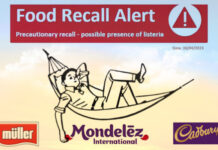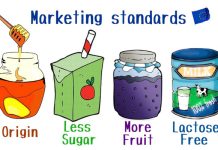Acrylamide is one of the most serious food safety problems still unresolved, in the absence of strict limits and official controls on the presence of this contaminant–carcinogenic and genotoxic–in food products.
SAFE Food Advocacy Europe
expresses serious concerns for the health of children and adolescents and calls for effective action from the European Commission in reviewing the very bland regulations in place.
1) Acrylamide in foods
1.1) Foreword
‘Acrylamide is a [toxic, ed.] chemical that naturally forms in starchy food products during high-temperature cooking-including frying, baking, roasting and industrial processing-at +120°C and low humidity.
The main chemical process that causes it is known as the Maillard reaction, which “browns” food and affects its taste.
Acrylamide is formed from sugars and amino acids (mainly one called asparagine) that are naturally present in many foods. Acrylamide is found in products such as potato chips, French fries, bread, cookies and coffee‘ (EFSA).
1.2) Standards in place
For some 20 years now, the scientific community has established correlations between dietary exposure to acrylamide, on the one hand, and DNA-damaging cancer risks in every age group. As early as 2005, EFSA confirmed the concerns expressed by theUnited Nations Joint FAO/WHO Expert Committee on Food Additives (JECFA), but it was not until 2015 that EFSA published a full scientific assessment in this regard.
The European Commission nonetheless, by reg. EU 2017/2158, limited itself to recommending the adoption of good practices to mitigate acrylamide formation and defining ‘reference values’ for various categories of foods at risk. (1) However, neither the monitoring of member states nor the subsequent recommendations have resolved the serious public health risk, which was also verified in Italy with special research (2,3,4).
1.3) Rules in the making
The dutiful reform is expected in Brussels in 2022 after extensive stakeholder consultation. Consumer groups such as SAFE, Foodwatch, and BEUC have repeatedly denounced the inadequacy of current regulations. A study conducted in 10 member countries on more than 500 food products(BEUC, 2019) showed excessive levels of acrylamide, to the point that 2/3 of cookies were found to be unsuitable for consumption by children under the age of three.
Therefore, the reform project needs to introduce maximum acrylamide thresholds in the different product categories, as stipulated in Recital 15 of Reg. EU 2017/2158. And in any case, these thresholds need to be reduced,” explains Floriana Cimmarusti, secretary general of SAFE, “because ‘with thecurrent levels and those proposed by the Commission, the likelihood that our children may consume an amount that is dangerous to their health is very high.’
2) Official controls and risk management
Notifications from member countries in the EuropeanRapid Alert Systemon Food and Feed(RASFF), in 2020-2021, reveal acrylamide contaminations between 497 to 2690 µg/kg, which is 4-5 times the reference values in the EU today. But controls are found to be weak and food safety risk management is often late, unable to protect European consumers.
‘The system of official controls does not help reduce the risk of contaminated products circulating on our tables. Since to date-from when a member state becomes analytically aware that there is a contaminated product to when it alerts other states through the RASFF-an average of 15 to 30 days’. (Floriana Cimmarusti, SAFE).
3) Acrylamide, SAFE’s proposed limits.
The European consumers’ association SAFE, in its position expressed in Brussels on 17.2.22, ‘agrees with the Commission’s defense of the interest of ensuring a high level of human health protection, but strongly suggests a timely adoption of maximum levels for acrylamide.’
SAFE’s proposed maximum contamination limits for each food category and their rationale, below. Taking into account existing reference levels and the need to reduce children’s exposure to acrylamide, and the serious health risks involved.
3.1) Cookies and waffles
Cookies and waffles are consumed by children of all ages, even under the age of three. On the other hand-as noted above in relation to mycotoxins, another category of carcinogenic and genotoxic contaminants (5)-it is dangerous to expose children, even as young as 3 years of age, to levels of contamination considered safe for a 70 kg adult.
Therefore, the European Commission is urged to:
– for the generality of cookies and waffles, set a maximum acrylamide threshold of 300 μg/kg (instead of the 350 μg/kg now provided as a reference level),
– for standard cookies clearly aimed at children, define the same limit set for ‘cookies and rusks for infants and children’ (150 μg/kg reference level 200 μg/kg maximum threshold).
3.2) Crackers
The reference and maximum levels under discussion in Brussels (400 μg/kg and 500 μg/kg) ‘are unlikely to protect the young population from excessive acrylamide exposure,’ explains SAFE expert Luigi Tozzi.
300 μg/kg should not be exceeded, according to SAFE, taking into account that these products in their various forms (e.g., pretzels) are also commonly fed to toddlers.
3.3) French fries and the like
French fries and the like, in analyses conducted by various consumer associations (BEUC. 2019), revealed an average acrylamide content of 1129 μg/kg. In contrast, a peak of 2690 μg/kg was recorded in the RASFF system.
A reference level like the one assumed by the European Commission, 700 μg/kg, would not change anything. Based on the data found, SAFE proposes to set the maximum thresholds for acrylamide in vegetable crisps at 500 μg/kg.
3.4) New. Dried fruits
Roasted nuts and related nuts, in the analyses and studies reviewed by SAFE, showed acrylamide levels above 1000 μg/kg in some samples, above any reference level provided by reg. EU 2017/2158.
Even dried fruits, while not subject to high temperatures, ‘have a surprising amount of acrylamide due to their drying over a long period.’ Both categories must therefore come under appropriate limits.
4) Conclusions
Given the high carcinogenicity of acrylamide and the obvious difficulty that mitigation measures have in decreasing its presence in foods as they are consumed by children and young people, as well as the difficulty for member states to control products on the market, SAFE calls for the maximum level to be determined according to the precautionary principle.
‘We recommend that the Commission establish safer binding levels for acrylamide in the types of foods widely consumed by young children, with a focus on cookies, wafers, and breakfast cereal and vegetable crisp products that are directly marketed to children.’ (SAFE, position paper 23.2.22).
Dario Dongo
Notes
(1) Dario Dongo. Acrylamide, ABC new rules. GIFT (Great Italian Food Trade). 1/21/18, https://www.greatitalianfoodtrade.it/salute/acrilammide-abc-nuove-regole
(2) Dario Dongo, Ylenia Desireè Patti Giammello. Acrylamide, unresolved dangers. GIFT (Great Italian Food Trade). 4/15/19, https://www.greatitalianfoodtrade.it/sicurezza/acrilammide-pericoli-irrisolti
(3) Dario Dongo. Acrylamide, Commission stalls. Yet another recommendation. GIFT (Great Italian Food Trade). 11/22/19, https://www.greatitalianfoodtrade.it/sicurezza/acrilammide-la-commissione-prende-tempo-ennesima-raccomandazione
(4) Dario Dongo, Ylenia Desireè Patti Giammello. Acrylamide in baked goods in Italy, study. GIFT(Great Italian Food Trade). 25.11.20, https://www.greatitalianfoodtrade.it/sicurezza/acrilammide-nei-prodotti-da-forno-in-italia-studio
(5) Marta Strinati. Mycotoxins, interview with Carlo Brera, ISS expert. GIFT(Great Italian Food Trade). 5/31/19, https://www.greatitalianfoodtrade.it/sicurezza/micotossine-intervista-a-carlo-brera-esperto-iss
Dario Dongo, lawyer and journalist, PhD in international food law, founder of WIISE (FARE - GIFT - Food Times) and Égalité.








